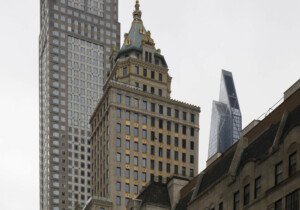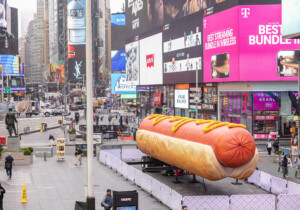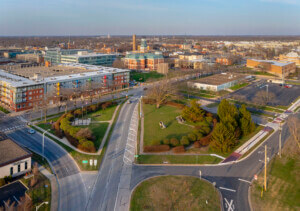The final section of Theodore Roosevelt Park, which surrounds the American Museum of Natural History (AMNH) in Manhattan, has reopened following a redesign that coincided with the construction of the Gilder Center. Designed by Reed Hilderbrand Landscape Architecture, the altered section of the park runs two acres on its west side with “additional trees and plantings, improved circulation, new gathering areas and seating, and upgraded park infrastructure including new lighting, irrigation, and stormwater management.”
The City acquired the land for the park in 1839—19 years before Roosevelt was born. After considering the site for both a botanical garden and zoo, the AMNH began constructing its home within the park in 1874, with design led by Calvert Vaux and Jacob Wrey Mould. The park was named for Roosevelt in 1958, and has hosted its fair share of sculptures, including Nobel Monument, which holds the names of U.S. citizen Nobel Prize winners, and The New York Times Capsule designed by Santiago Calatrava, which was reinstalled next to the Rose Center for Earth and Space entrance as part of the redesign. A statue of Roosevelt outside of the AMNH’s main entrance was taken down in last year in response to criticisms that reinforced racial hierarchies. The museum viewed the statue as reinforcing colonization of the U.S., but not discrediting Roosevelt’s work as a conservationist.

As Studio Gang’s museum addition rose up near Columbus Avenue, Reed Hilderbrand received input from community groups, Community Board 7, and other public officials on the park’s concomitant redesign. The landscape architects’ design focused on shading, circulation, and recreation. Notable existing canopy trees were preserved in compliance with the Parks Department’s tree protection protocols, and 23 canopy and understory trees were installed. Planted islands within the hardscaping provide the trees with adequate space while weaving them into new circulation patterns.

A new entrance on Columbus Avenue welcomes park-goers with new curvilinear paths and added benches, and the Margaret Mead Green was expanded to 13,500-square-feet, providing ample open space. Hardscape areas extending from main circulation paths provide public space outside of pedestrian traffic flows, allowing for congregation. Shade trees cover some pathways, while there is some pedestrian space left exposed to full sun, and short, black metal fencing protects beds and lawns from unfocused pedestrians.


John Grove, partner in charge for Reed Hilderbrand, said that “We have come to know Theodore Roosevelt Park as essential to daily life on the Upper West Side… “Like any great urban public park, this park has evolved as the city surrounding it changed and grew. To realize the park’s next chapter has been immensely rewarding for us, knowing that our work has enriched and expanded a beloved landscape for future generations.”











